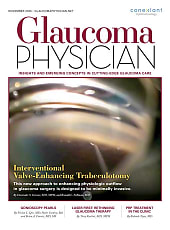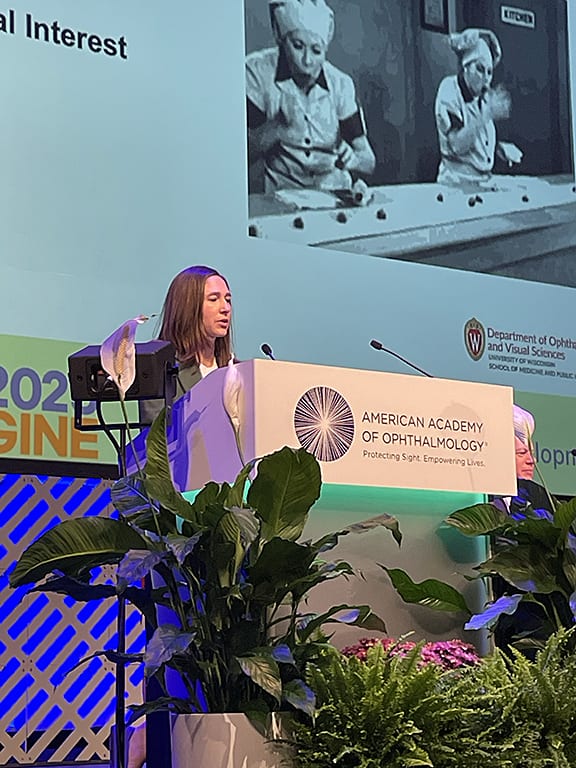Amid workforce shortages and an expanding patient population, glaucoma specialists are increasingly turning to efficiency-enhancing tools and collaborative care models. At the 2025 American Academy of Ophthalmology (AAO) meeting in Orlando, Florida, Anna C. Momont, MD, explained how she has adapted her university-based practice to meet these challenges.
During her glaucoma subspecialty day presentation, “New Developments From 2025 That I Apply to Clinical Practice,” Dr. Momont, an associate professor in the Department of Ophthalmology and Visual Sciences at the University of Wisconsin School of Medicine and Public Health and a glaucoma specialist and cataract surgeon at UW Health, said her approach has been shaped by both innovation and necessity. “The things I’ve adopted this year are meant to help with effective and efficient treatments for the patients I see in the clinic.” Her talk focused on three areas: early interventions, technology in clinical practice, and collaboration to address workforce strain.
Dr. Momont emphasized the value of selective laser trabeculoplasty (SLT) as an early, effective, and cost-efficient first-line option. “We can go back and look at the LiGHT trial and say that SLT probably saves us money and improves the patient experience,” she said. UW Health is also participating in the COAST trial, a federally funded study investigating optimal laser energy levels and treatment intervals for SLT. “Hopefully we’ll have even more information going forward on the algorithms of how to use the laser most effectively,” she added.
She noted that interest is growing in newer laser platforms, including direct selective laser trabeculoplasty (DSLT) using the Voyager laser (Alcon). “Some of our comprehensive ophthalmologists are very excited about the next generation of laser trabeculoplasty,” Dr. Momont said. “That’s probably even more of something patients would appreciate.”
Dr. Momont also highlighted how cataract surgery combined with MIGS has reshaped her practice. “I encourage all ophthalmologists to consider cataract surgery for primary angle-closure glaucoma, and phaco plus MIGS to treat mild to moderate open-angle glaucoma. These simple interventions can prevent the need for higher risk surgery in the future,” she said.
Turning to clinical technology, Dr. Momont described adopting tools that streamline documentation and patient flow. She discussed using virtual scribes, AI-assisted charting, and previsit planning tools to reduce administrative burdens, though she cautioned that “we need to ensure these technologies are good for both patients and providers.” She also cited greater use of telehealth and technician-only visits as ways to improve access.
Finally, Dr. Momont discussed strategies for sharing the workload—a pressing issue in 2025, when staffing gaps left her as the sole glaucoma specialist at UW Health for several months. With only two glaucoma specialists currently on staff, she has leaned on collaboration with optometrists and comprehensive ophthalmologists. “We’re focused on ensuring that everyone works at the top of their license,” she said. “We now have 2 optometrists who spend about 80% of their time on glaucoma care, and they work very closely with us caring for these patients.”
By integrating established technologies, expanding proven treatments like laser trabeculoplasty, and strengthening interprofessional partnerships, Dr. Momont said her practice has maintained access to care despite limited subspecialty capacity. “Many places don’t have a lot of glaucoma subspecialty care,” she said, “so it’s about making sure we’re all working together to meet patients’ needs.” GP









